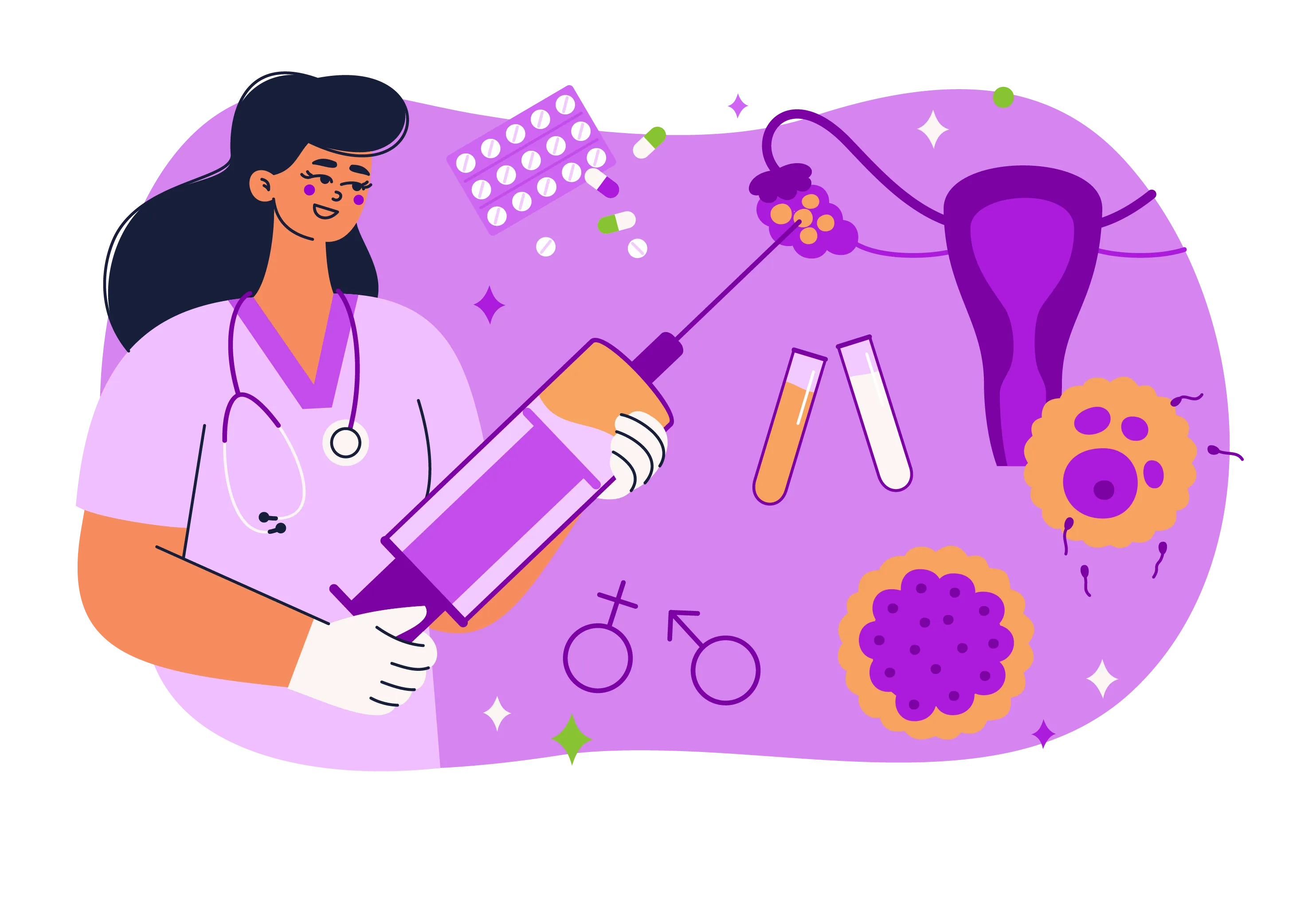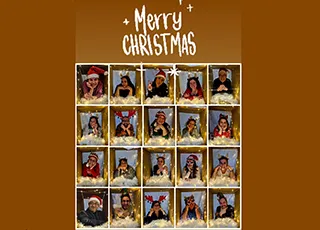Onze multidisciplinaire centra
Het laatste nieuws van het MBV-centrum
Contactformulieren
Als u meer informatie wenst over uw specifieke situatie, kunt u dit contactformulier invullen.
Ons team zal zo snel mogelijk contact met u opnemen.
Wilt u anonieme eiceldonor/spermadonor worden?
Vul dan dit formulier in.
Ons team zal zo snel mogelijk contact met u opnemen.
Wat is spermadonatie?
Het is een vorm van medisch begeleide voortplanting waarbij sperma wordt gebruikt van een andere man dan degene die bij het ouderschapsproject betrokken is, hetzij omdat deze laatste niet in staat is om met zijn eigen sperma kinderen te verwekken, hetzij omdat er geen man bij het oorspronkelijke ouderschapsproject betrokken is (alleenstaande vrouw, vrouwelijk koppel).
Voor wie is deze behandeling bedoeld?
Spermadonatie kan aangewezen zijn:
- Voor koppels waarbij de man geen zaadcellen heeft (azoöspermie), te weinig zaadcellen heeft (oligospermie) of zaadcellen van te slechte kwaliteit heeft (teratospermie) om ondanks toegang tot in-vitrofertilisatiebehandelingen een zwangerschap te verkrijgen.
- Als de man drager is van een ernstige genetische ziekte die bij gebruik van zijn eigen zaadcellen op het kind kan worden overgedragen.
- Voor vrouwelijke koppels of alleenstaande vrouwen die een kind willen.
De wet in België
Spermadonatie is toegestaan voor heteroseksuele paren, maar ook voor alleenstaande vrouwen en vrouwelijke paren.
Anonieme donatie is toegestaan, evenals gerichte donatie op basis van een directe overeenkomst tussen de donor en het ontvangende paar of de ontvangende vrouw.
Het sperma van dezelfde donor mag niet leiden tot de geboorte van meer dan 6 verschillende vrouwen (of vrouwelijke paren).
De commercialisering van sperma is verboden.
Eenmaal uitgevoerd, is spermadonatie onherroepelijk en heeft de donor geen wettelijke rechten of plichten ten opzichte van het kind.
Wie zijn de donoren?
- Anonieme vrijwillige donoren die een ander koppel willen helpen om een kind te krijgen. De donatie is altruïstisch en de donoren worden niet betaald. Ze ontvangen alleen een kleine vergoeding voor het loon dat ze mislopen door de tijd die de donatie in beslag neemt.
- Ofwel directe donoren: meestal gaat het om een goede vriend van het koppel die rechtstreeks sperma doneert aan een vrouw of een koppel, waardoor het kind later toegang krijgt tot zijn afkomst.
Welke onderzoeken worden bij donoren uitgevoerd?
Anonieme donoren moeten tussen 18 en 45 jaar oud zijn.
Ze worden ontvangen voor een consult door een kinderpsychiater of psycholoog, een geneticus en een arts gespecialiseerd in voortplantingsgeneeskunde, die hen uitgebreid ondervraagt om hun motivatie en medische geschiedenis te controleren en zich ervan te vergewissen dat er geen risico bestaat op overdracht van ziekten op het kind.
Er wordt bloed afgenomen om seksueel overdraagbare aandoeningen, de meest voorkomende genetische ziekten (zoals mucoviscidose) en bepaalde chromosomale afwijkingen via een karyotype op te sporen.
Dezelfde tests worden uitgevoerd bij gerichte donoren.
De behandeling in de praktijk
Spermadonoren produceren een spermastaal door masturbatie. Het sperma wordt vervolgens in het laboratorium behandeld en vervolgens in rietjes ingevroren.
Het wordt in quarantaine geplaatst om er zeker van te zijn dat er geen risico op seksueel overdraagbare aandoeningen bestaat.
Het sperma van de donor met de meest geschikte fysieke kenmerken wordt geselecteerd voor de behandeling.
Als de vrouw geen vruchtbaarheidsproblemen heeft, bestaat de behandeling uit een intra-uteriene inseminatie. Op het moment van de eisprong wordt het sperma ontdooid, voorbereid en met behulp van een dunne katheter in de baarmoederholte ingebracht.
In bepaalde situaties is het noodzakelijk om gebruik te maken van in-vitrofertilisatie (verstopte eileiders, ernstige endometriose, enz.). In dat geval worden de eicellen van de vrouw verwijderd en in het laboratorium bevrucht met het sperma van de donor.
Het of de zo gevormde embryo('s) worden vervolgens in de baarmoeder van de vrouw geplaatst, waar ze zich kunnen hechten en verder ontwikkelen.
Resultaten
Het succes van een zwangerschap bij een spermadonatieprocedure varieert naargelang de leeftijd van de patiënte, eventuele pathologieën en de kwaliteit van het embryo dat wordt gevormd bij een in-vitrofertilisatie.
Mogelijke risico's
Zwangerschappen die tot stand zijn gekomen door spermadonatie verschillen niet van zwangerschappen die tot stand zijn gekomen door normale geslachtsgemeenschap.
Het percentage miskramen of aangeboren afwijkingen is identiek.
Voor wie is deze behandeling bedoeld?
Eiceldonatie kan aangewezen zijn wanneer:
- De vrouw heeft geen eicellen meer (vroegtijdig ovarieel falen of hoge leeftijd).
- De vrouw heeft weinig eicellen en/of eicellen van slechte kwaliteit, waardoor zwangerschap ondanks in-vitrofertilisatie onmogelijk is.
- De vrouw is drager van een ernstige genetische ziekte die bij gebruik van haar eigen eicellen op het kind kan worden overgedragen.
Wettelijke bepalingen
De Belgische wetgeving staat eiceldonatie toe tussen twee personen die elkaar kennen (directe of gerichte donatie) of twee personen die elkaar niet kennen (anonieme donatie).
Het is mogelijk om eicellen af te nemen bij een zus, een naaste verwante of een vriendin, deze te bevruchten en vervolgens over te brengen naar de ontvanger (gerichte donatie).
Er is ook de mogelijkheid om een beroep te doen op een anonieme eiceldonatie of een gekruiste anonieme donatie.
In België zijn er maar heel weinig spontane anonieme eiceldonoren. Bovendien is het verboden om donoren te vergoeden en hiervoor reclame te maken.
Donoren ontvangen alleen een kleine vergoeding voor het loonverlies dat ze lijden door de tijd die de donatie in beslag neemt.
In het geval van een anonieme kruisdonatie kunt u een donor meebrengen die u in uw omgeving hebt gevonden. Zij kan anoniem haar eicellen aan een ander koppel doneren en in ruil daarvoor zullen wij u op even anonieme wijze eicellen van een andere donor toewijzen (anonieme kruisdonatie).
In principe moet de donor voor een anonieme donatie:
- Ouder zijn dan 18 jaar en jonger dan 36 jaar (35 jaar en 364 dagen).
- Voldoen aan de criteria voor anamnese (persoonlijke en familiale medische geschiedenis) en aan de door de arts gevraagde paraklinische onderzoeken.
- Verplicht een afspraak maken met de psycholoog.
- Verplicht een afspraak maken met een geneticus.
In principe moet de donor voor directe donatie:
- Ouder zijn dan 18 jaar en jonger dan 39 jaar (38 jaar en 364 dagen)
- Ten minste één kind hebben
- Voldoen aan de criteria voor anamnese (persoonlijke en familiale medische geschiedenis) en de door de arts gevraagde paraklinische onderzoeken
- Verplicht een afspraak maken met de psycholoog.
- Verplicht een afspraak maken met een geneticus
Deze voorwaarden worden echter per geval bekeken.
De kandidaat-donor moet natuurlijk aan strenge medische criteria voldoen voordat ze wordt geaccepteerd.
De ontvanger moet haar aanvraag voor kunstmatige voortplantingstechnieken vóór haar 45e hebben ingediend.
De embryotransfer is toegestaan tot haar 48e (47 jaar en 364 dagen).
Behandeling
De donor moet een ovariële stimulatiebehandeling ondergaan om meerdere follikels en eicellen te verkrijgen. Deze stimulatie duurt ongeveer 12 dagen. Ze is gebaseerd op hetzelfde principe als de behandelingen die bij standaard in-vitrofertilisatie worden gebruikt.
De rijping van de follikels moet worden gecontroleerd door een gynaecoloog: hiervoor zijn enkele bloedafnames en echografieën nodig, die eventueel in de buurt van de woonplaats kunnen worden uitgevoerd, op voorwaarde dat de resultaten ons dezelfde dag vóór 16 uur per fax of e-mail worden bezorgd.
Wanneer de follikels rijp zijn, wordt de eisprong 's avonds laat op gang gebracht door middel van een injectie.
De donor moet op de dag van de eicelpunctie in de kliniek aanwezig zijn voor een dagopname. De eicelpunctie vindt normaal gesproken plaats onder sedatie (lichte algehele narcose).
De ontvanger moet een onderzoek ondergaan om te bevestigen dat zij geschikt is voor een embryotransfer en zij moet ook een behandeling ondergaan om de baarmoeder voor te bereiden.
De cyclus van de ontvanger hoeft niet noodzakelijkerwijs te worden gesynchroniseerd met die van de donor. Het is namelijk heel goed mogelijk dat de donor haar cyclus begint en dat de eicellen of embryo's worden ingevroren voordat ze later bij de ontvanger worden teruggeplaatst, zonder dat dit de kans op zwangerschap vermindert.
In de praktijk zijn de cycli van de ontvanger en de donor meestal niet gesynchroniseerd, dankzij de geavanceerde technieken voor het invriezen van eicellen en embryo's.
Resultaten
De resultaten van eiceldonatie zijn goed en hangen voornamelijk af van de leeftijd van de donor.
Gemiddeld kan worden aangenomen dat meer dan 60% van de ontvangers na hun derde transfer zwanger zal zijn.
Gelieve het formulier in te vullen om ons op de hoogte te brengen van uw start van een behandelingscyclus.
Het secretariaat van het MBV-centrum zal u binnen 3 uur na uw aanvraag contacteren. Gelieve telefonisch bereikbaar te blijven.
Als u binnen de 3 uur niets van ons hoort, gelieve de volgende nummers te contacteren:
- Braine-l'Alleud : 02/434 95 55
- Delta : 02/434 81 73
Let op: Als u uw formulier in het weekend verstuurt, wordt het behandeld op de eerstvolgende maandag.


